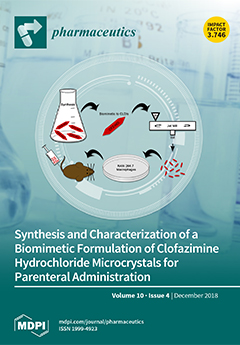Open AccessArticle
Investigation of Different Iontophoretic Currents Profiles for Short-Term Applications in Cosmetics
by
Jennyfer Cázares-Delgadillo, Lien Planard-Luong, Sébastian Gregoire, César E. Serna-Jiménez, Mayank Singhal, Yogeshvar N. Kalia, Virginia Merino, Matilde Merino-Sanjuán, Amparo Nácher, Ma. Amparo Martínez-Gómez, Veronique Burnier-Yalaoui and Philippe Barbarat
Cited by 6 | Viewed by 5926
Abstract
This study aimed at investigating the effect of electrical current profile upon the iontophoretic transport of (i) ascorbic acid (AA) and (ii) ellagic acid (EA), into porcine skin in vitro, and the impact of the physicochemical properties of both actives on their mechanism
[...] Read more.
This study aimed at investigating the effect of electrical current profile upon the iontophoretic transport of (i) ascorbic acid (AA) and (ii) ellagic acid (EA), into porcine skin in vitro, and the impact of the physicochemical properties of both actives on their mechanism of transport when formulated in cosmetic compositions. The experiments were performed using a proprietary iontophoretic device containing a roller to apply the formulation. Three current profiles were tested: (i) galvanic direct current (DC), (ii) square unipolar pulse current (SPC), and (iii) galvanic direct current (DC) + pulse current (PC). The skin samples were collected at different sampling points, extracted and analyzed by HPLC. Results suggested that the DC + PC mode for only 5 min was able to significantly increase the delivery of AA from o/w cosmetic compositions. The use of this current profile might improve the skin penetration of AA due to electromigration and passive diffusion, the latter being facilitated by the physical enhancement method. The SPC mode significantly improved the passage of EA in its neutral form from cosmetic o/w formulations by electroosmosis. Tailoring specific electrical current modes considering the ionization state of active ingredients would allow the design of short and personalized cosmetic treatments that significantly improve the penetration efficiency of the active ingredients and possibly reduce the doses applied.
Full article
►▼
Show Figures






